Make the most of the season’s produce with these side dishes, ideal for long summer days
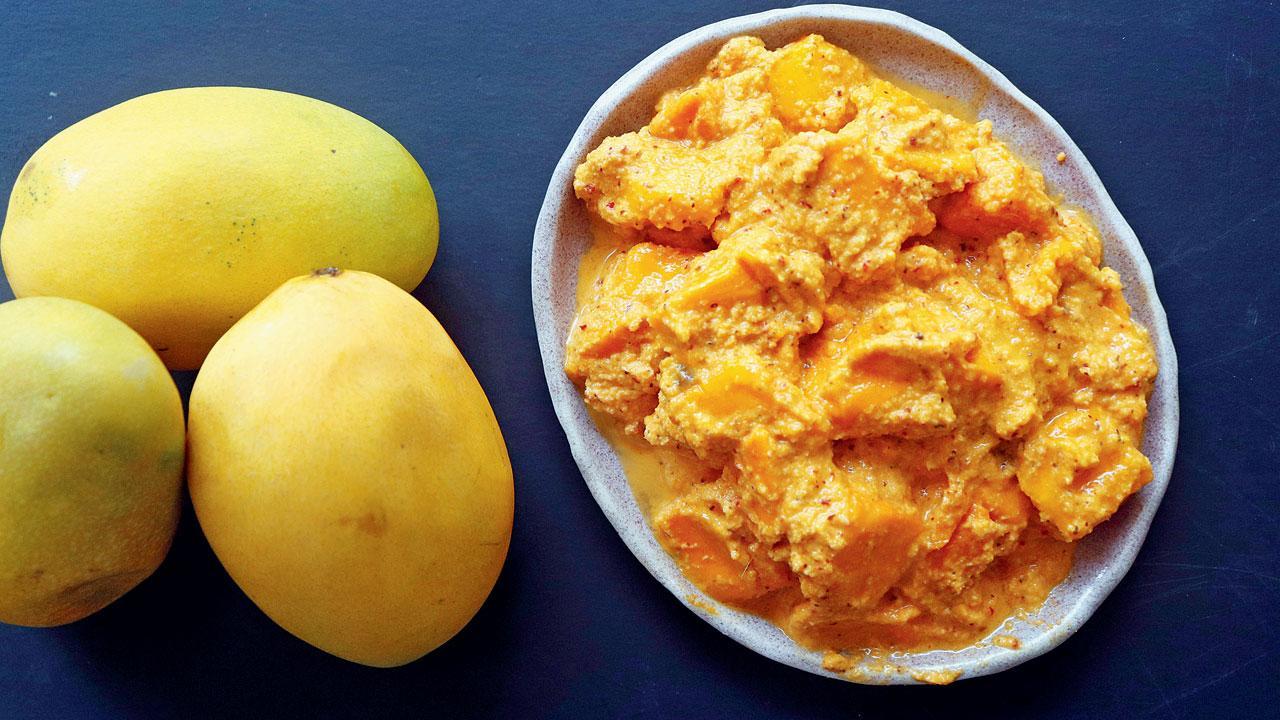
Ambya sasam, a Konkani speciality mostly uses ripe mangoes but pineapple, grapes, and plums feature sometimes too. Ambe dal rings in Chaitra maas or the onset of spring and it is usually served with aam panna. Pics/Anurag Ahire
Heaps of raw mangoes and memories of your grandma, mother or aunts making pickles, murrabas, chutneys or aam panna is enough to warm your heart for a lifetime. While mango is undoubtedly the highlight of every summer vacay, smaller dishes that nonchalantly sit on the side of a main dish do turn into heroes for just one day. Chefs from across the country share their regional favourites of sideys that beat the heat.
ADVERTISEMENT
Maharashtra
For Powai-based home baker Malavika Gadiyar, making ambe dal marks the onset of spring (Chaitra maas)—it’s when the first batch of raw mangoes hit the market and an offering of the dal is made for Chaitra maas puja. However, it’s a treat she repeatedly makes till the end of summer, serving it to guests along with aam panna as a mid-meal snack.

Malavika Gadiyar
Chana dal is soaked for four to five hours, and ground coarsely with grated raw mango, coriander leaves, coconut, and salt in a mortar and pestle. Then comes the tempering of red chilli, mustard seeds and asafoetida. “As kids, when we went visiting our friends and relatives, we were offered a spoonful of ambe dal on the palm. We’d put it in our mouth and wash it down with tangy aam panna,” she remembers. In some homes, this dry dal is made throughout the year where raw mango is replaced with lemon as a souring agent.
Her other favourite summer side dish is kairas. “This sweet sour, and hot preparation is more like a quick pickle,” she explains. “Raw mango pieces tempered in oil with a pinch of fenugreek, mustard seeds and cooked in water with salt jaggery and red chilly powder to make a slurry. Unlike regular mango pickle that takes days to make, this is made and consumed immediately,” she says. Another popular dish in the Konkan belt is ambya sasam. Made with any firm fruit, mango is often a preferred choice, especially in the season.
It comprises of chopped ripe mango, coconut, tamarind, dried red chillis, coriander seeds and other spices ground into a coarse paste with a tempering of mustard seeds and asafoetida. Gadiyar suggests that in other season the sassam is made with other firm fruits like pineapple grapes or apples or a mix of all.
Goa
Just like the Maharashtrian ambya sansav, Goan Hindu cuisine has a dish called ghonta sansav. Crescy Baptista, who runs The Goan Kitchen along with Oliver Fernandes, explains, “In ghonta sansav, only a particular variety of local Goan mango called Ghonta is used. We also add local sugarcane jaggery.” Ghonta mangoes (a sucking variety) are sweet and tangy, so many don’t prefer this variety. Baptisa recommends a thick curry-like sabji with riceor Goan poee. A staple in summer, it is a special dish made for Goan Hindu weddings because it is sattvic [without onion and garlic],” explains Baptista.
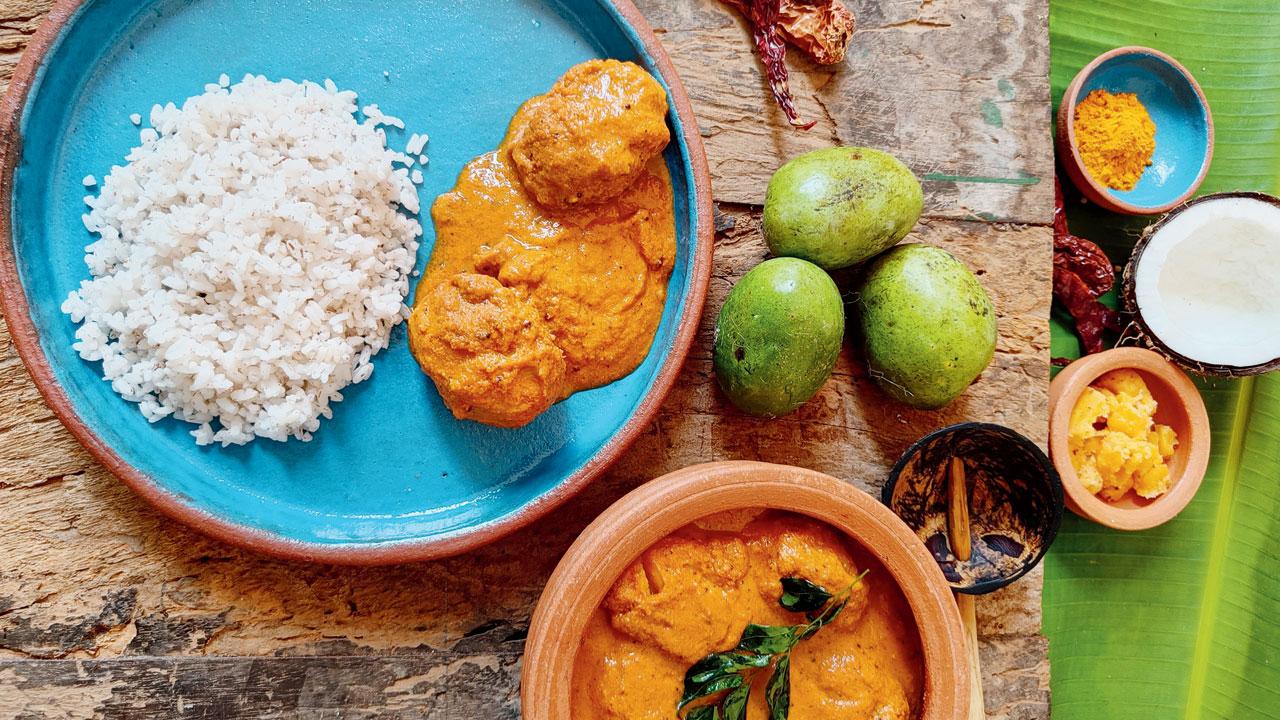
Ghonta sansav is a sattvic dish from the Goan Hindu cuisine
Other dishes are ponsacho chakko and ponsacho shaak, says Baptista. Ponsa is jackfruit, which also basks in its moment this season. Its tender flesh is cut into cubes and tempered with mustard seeds, asafoetida, onion, coconut, chilli powder or green chillies. “Since raw jackfruit is bland, it absorbs all flavours. You can also add chickpeas to this dry dish,” says Baptisa who compares this to the dry Maharashtrian usal, and recommends eating it with rice and curry.
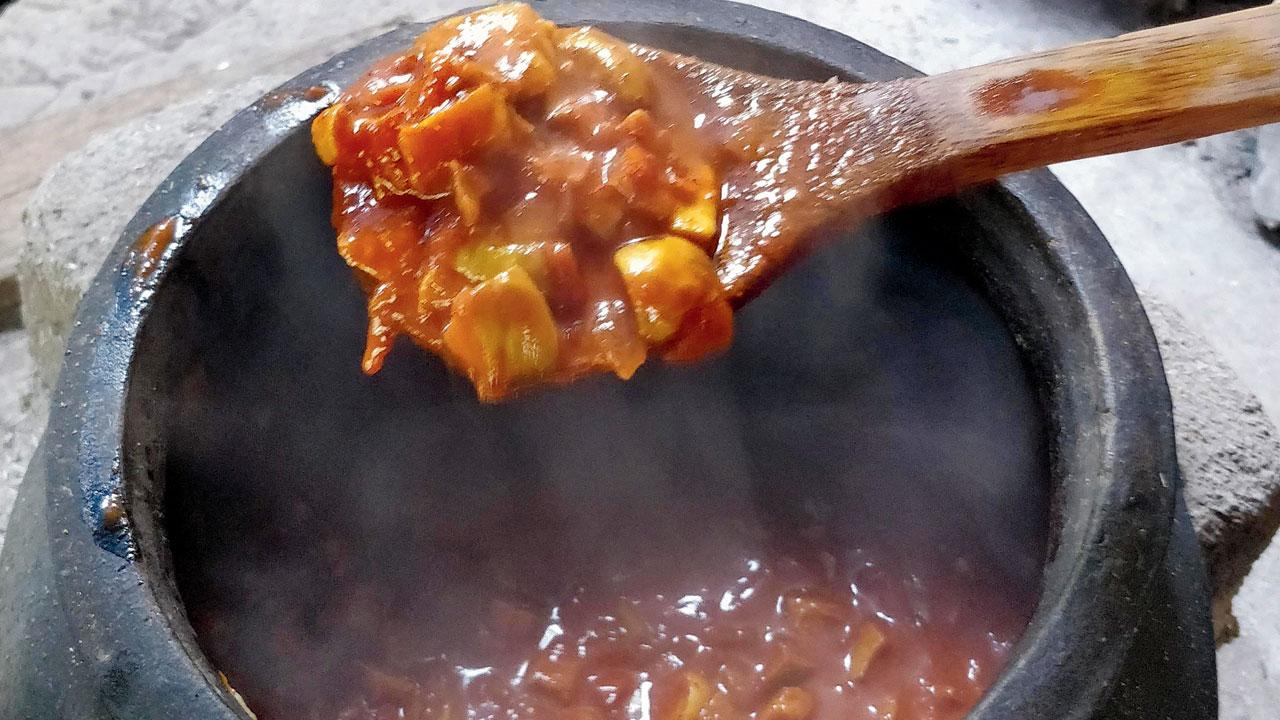
Cashew sorpotel is the vegetarian version of the original dish which uses pork offal. Goans would much rather use cashew apples to make urrack than sorpotel
The breadfruit caldin is another favourite and is used in a mild and delicious yellow curry is made using a few spices and coconut milk. Jackfruit is also used to make fritters, cutlets, pathalyo (steamed in turmeric leaves) and sanna (steamed rice cake) where it is used as a filling.

Ponsacho shaak and chakko are both dry preparations made from jackfruit
Goan cuisine is divided into two main strains—Hindu dishes that use mustard seeds and asafoetida, and Catholic dishes which mostly don’t. She spotlights an exclusive Goan Catholic dish, the cashew sorpotel, a vegetarian version of the famous sorpotel made from pig offal. “The cashew apple is a cooling agent and doesn’t have any flavour so if you cook and let it sit for 48 hours, it absorbs the flavours of the sorpotel red spice paste,” says Baptista, adding, “The dish isn’t common because cashew apples are used to make the alcohol urrack. So, the Goans would rather use it for that than to make sorpotel. Besides, cashew apples, unlike cashew nuts, are available only during summer and last only a day or two,” she reasons.
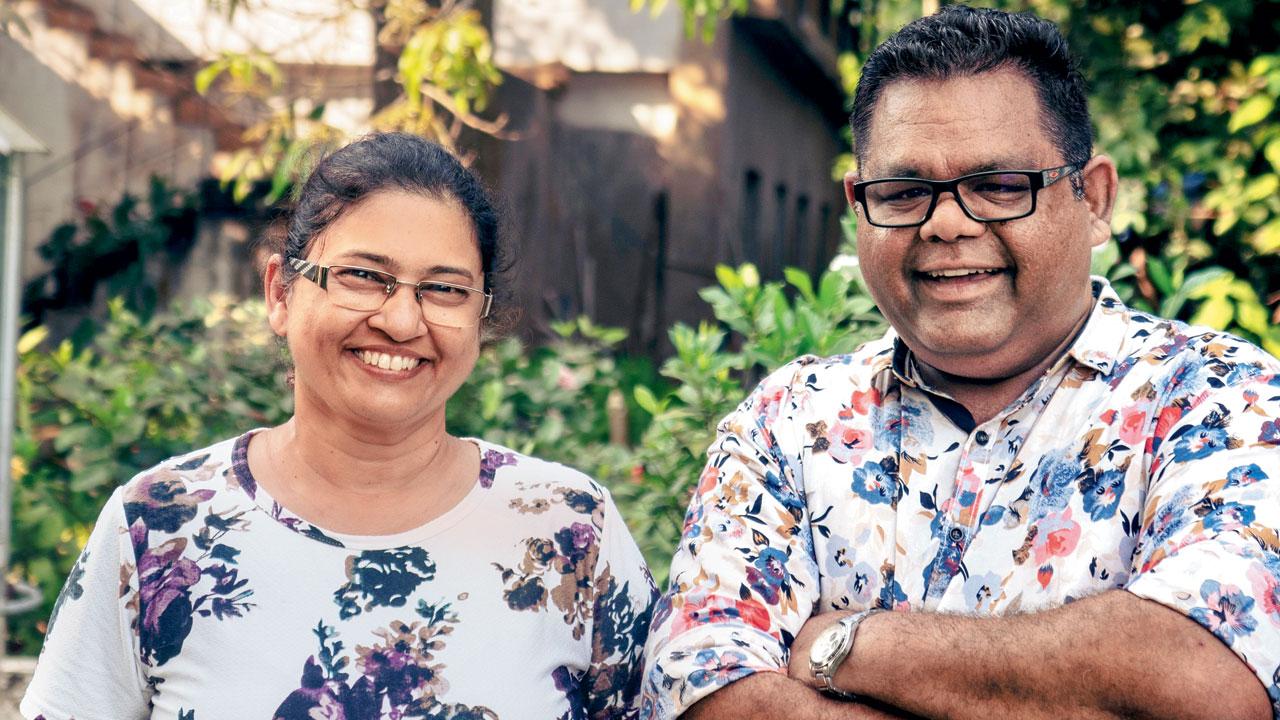
Crescy Baptista and Oliver Fernandes
Chhattisgarh
Bore baasi—this traditional dish of fermented rice was recently in the news when Chhattisgarh Chief Minister Bhupesh Baghel urged citizens to consume it on May Day as a gesture of respect. “Add water to cooked rice and let it sit for a bit or even overnight before consuming it at room temperature with regional leafy greens, dry aloo ki sabzi, millet preparations, badis and pickles. This soup-y dish is cooling and the fermentation process is said to increase levels of Vitamin B complex, Vitamin K, calcium, iron, magnesium, potassium, and selenium,” says home chef Lubna Farheen Khan of Zazo Foods, who is from Chhattisgarh.
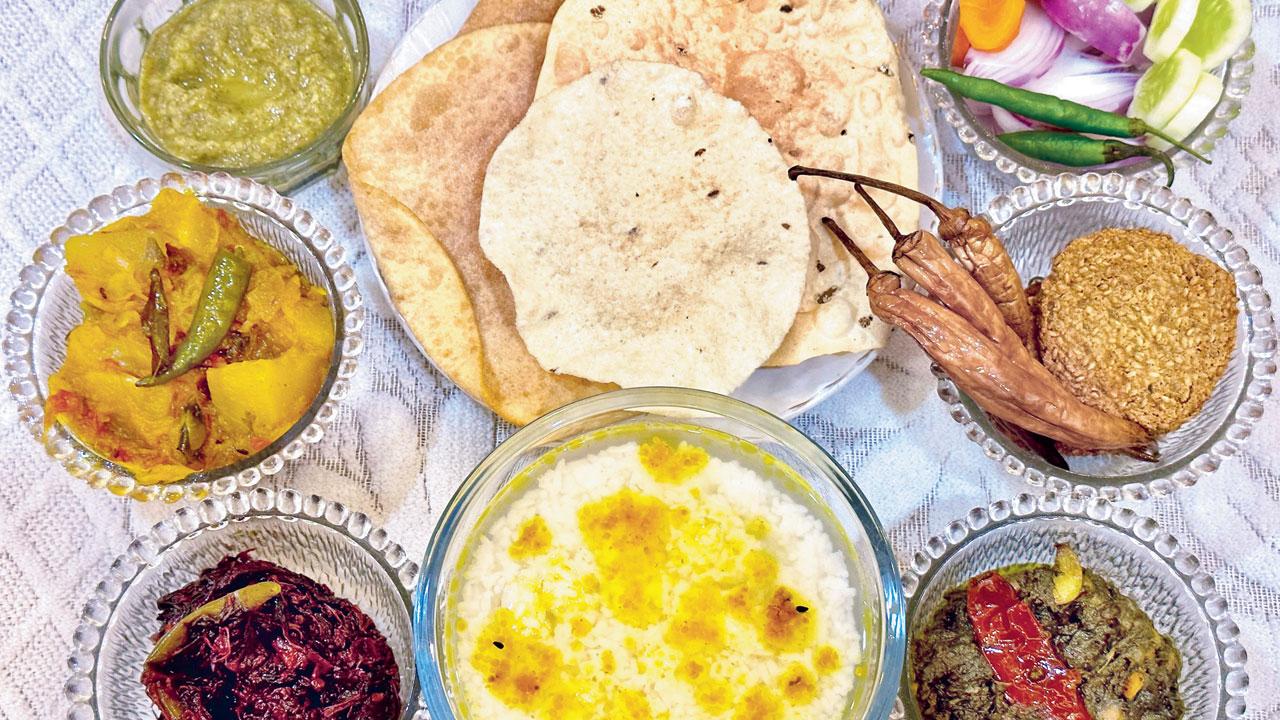
Bore baasi is a traditional Chattisgarhi dish that has gained popularity after the state’s CM urged people to have it on May day
Indigenous variety of rice is used and while traditionally only water is added, many prefer to flavour it with onion, green chilli, coriander or even a pickle. This is consumed in parts of Odisha as well. “Growing up, my mother used to make this regularly but it wasn’t until recently that I realised how important it is in our culture,” she says.
Another common side dish is similar to the sirke wale pyaaz pickle widely consumed in north India. “In Chhattisgarh,” says Khan, “we also add beetroot, carrots and chilli in lime or vinegar and store it in the fridge and have it chilled as an accompaniment.
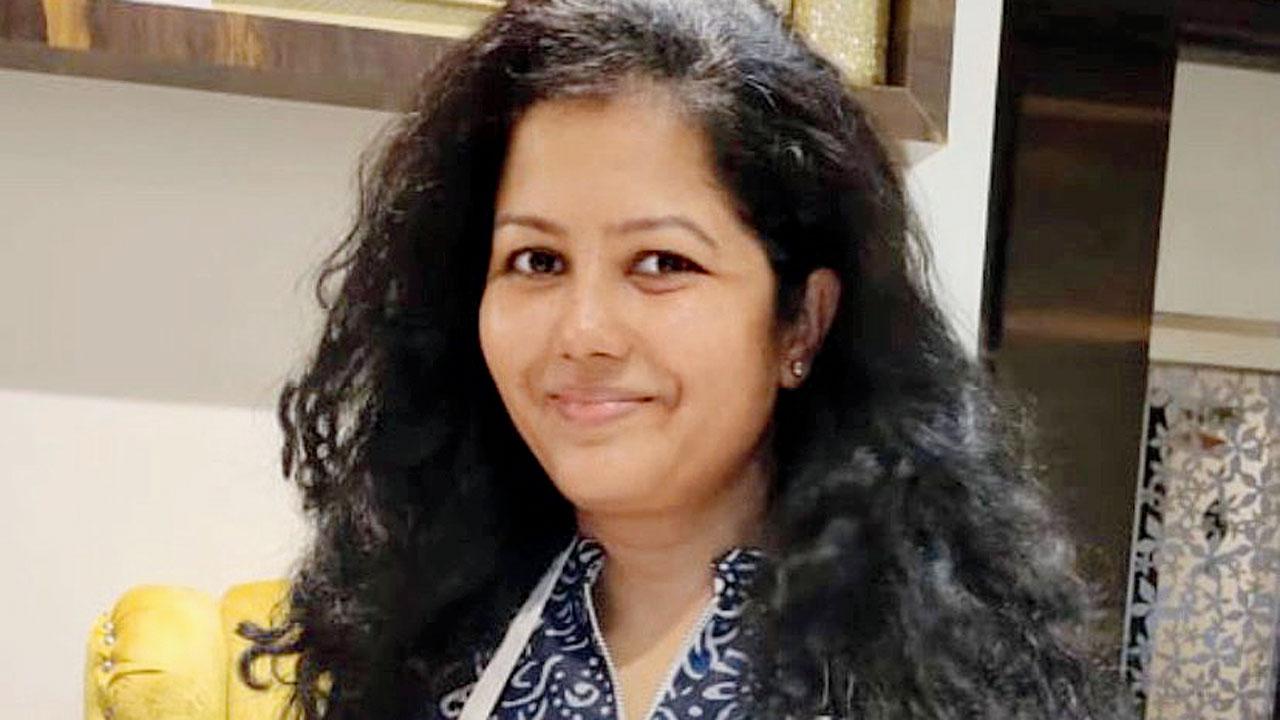
Lubna Farheen Khan
Karnataka
Mangalore too has a mixed fruit sasam, albeit this one is served chilled. Food blogger Renuka Nadkarni-Hattangadi often makes a full meal out of it or has it for dessert. Another cold dish is tambli, a coconut and milk-based gravy served with hot rice and fish. There are variants such as palak or ginger and onion, jackfruit seed and drumstick flower tamblis. The best part says Nadkarni-Hattangadi, is that there’s no cooking involved.
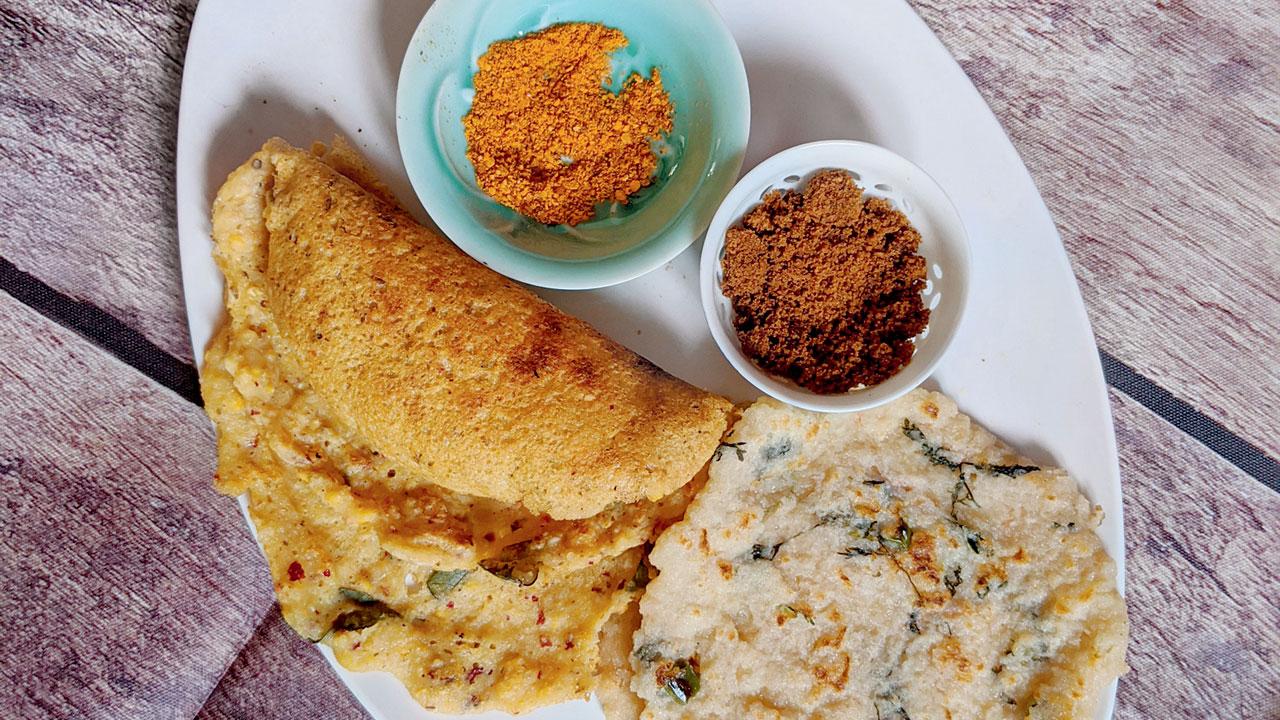 Taushe Doddak; Kalingan Doddak
Taushe Doddak; Kalingan Doddak
Another of her favourites is ambya andurli, a particular variety of mango available in Karnataka, mixed with jaggery, salt, and chilli powder and given a tadka of curry leaves, red chillis and mustard seeds. “I’ve tried making it with other varieties of mangoes but it doesn’t taste the same,” she says. Another unique dish is the cucumber and watermelon rind dosa called taushe doddak and kalingan doddak respectively.
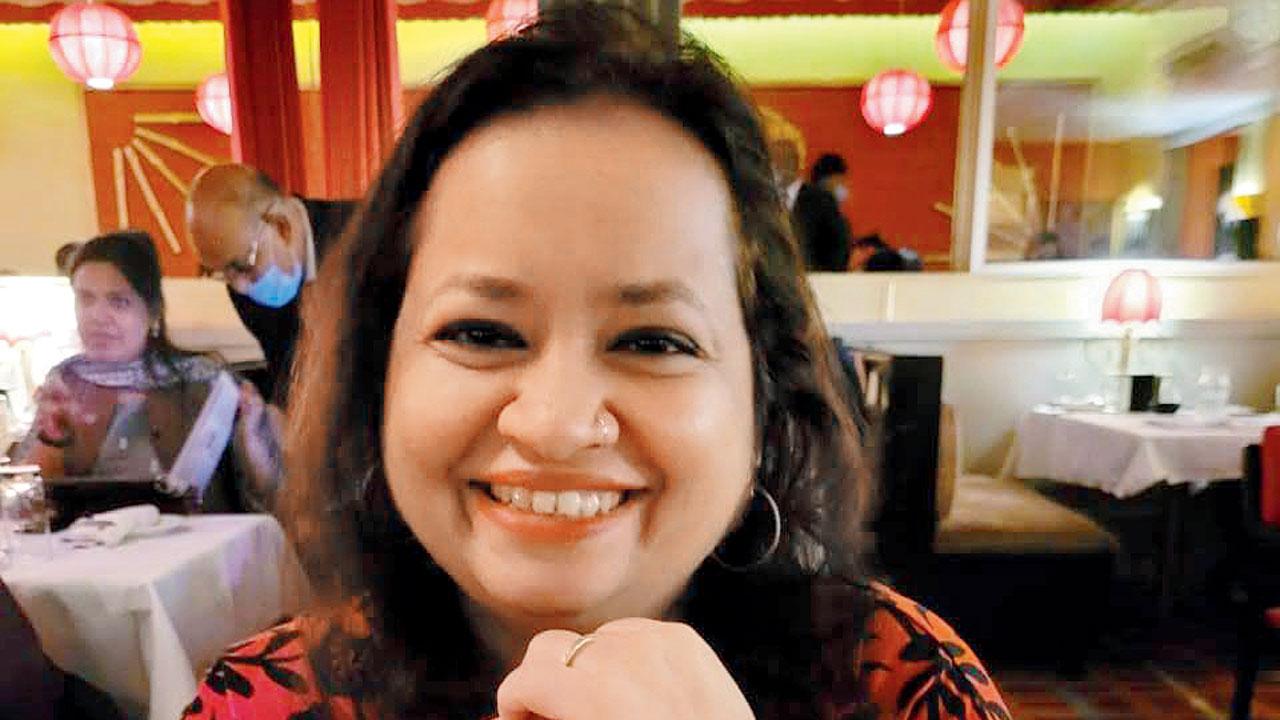
Renuka Nadkarni Hattangadi
It is an instant dish where you use rice or idli rava, add curd, ginger, green chillies, coriander, onions and grated cucumber or watermelon rind. “As kids, our grandmother never allowed us to throw away the watermelon peel. Unlike a dosa, this one is difficult to spread as it is quite thick, so she suggests “plopping it on the tava like thalipeeth and serving it with white butter as breakfast or snack.
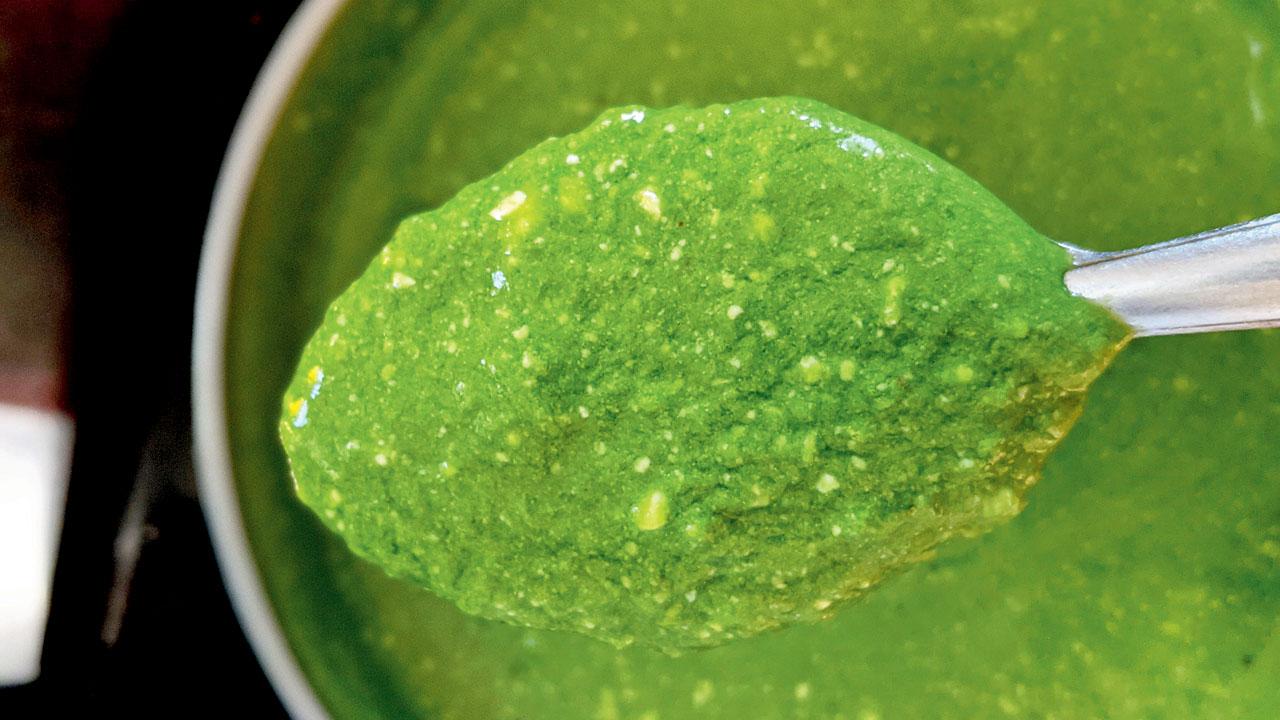
Palak Tambli
Ambe dal
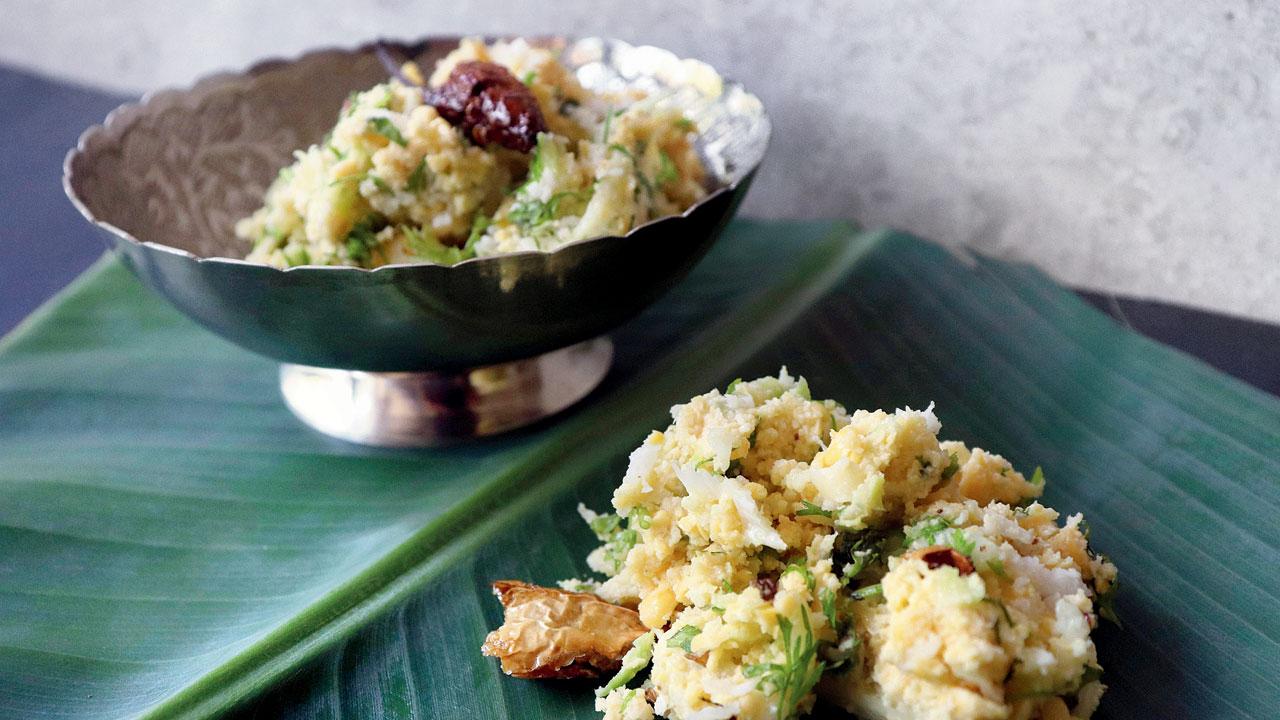
Ingredients
1 cup chana dal
1-2 green chillies
1/4 cup peeled and grated raw mango
4 tbsp freshly grated coconut
2 tbsp chopped coriander
2-3 dry red chillies
Salt to taste
Sugar to taste
1-1/2 tbsp oil
Method
Wash and soak the chana dal for four to five hours. Drain the water. Grind the soaked dal and chillies coarsely, without adding water. Transfer to a container and mix in shredded raw mango, grated coconut, coriander, sugar and salt. Heat oil and fry the dry red chillies and add to the mixture. Adjust the seasoning and serve one to two tablespoons as an accompaniment to a meal or as a quick snack.
Breadfruit caldin
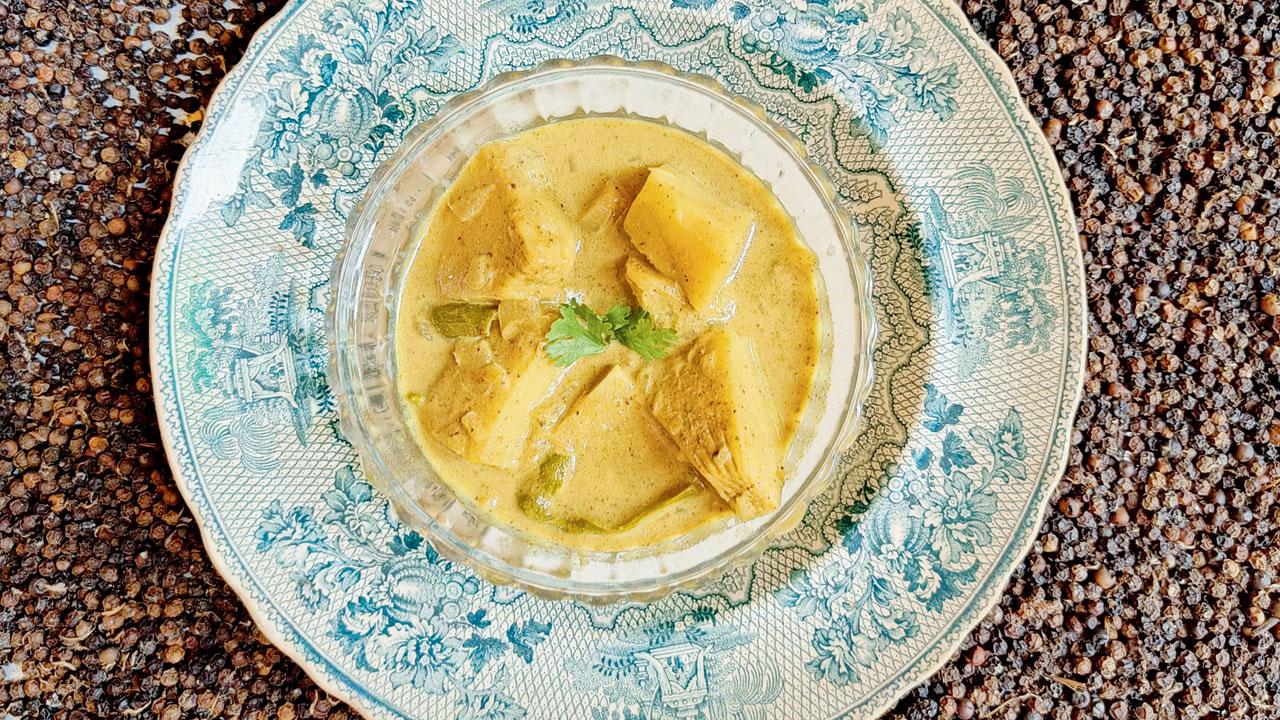
Ingredients
1 breadfruit
1 coconut
3 green chillies
1-inch cinnamon
8 cloves
1/4 tsp cumin
1/4 tsp turmeric powder
150 gms onion
1 tbsp oil
1 tbsp sugar
Method
Peel the breadfruit, cut into cubes, apply salt and keep aside. Extract coconut milk in two batches. Grind chillies, cinnamon, cloves and cumin into a fine paste. Sauté finely chopped onion till golden brown. Add spice paste and sauté for a minute. Now add cubed breadfruit, and thin coconut milk and cook till the breadfruit is done.
Once done add thick milk, sugar, check salt and bring to a boil. Ladle over hot rice or pulao.
 Subscribe today by clicking the link and stay updated with the latest news!" Click here!
Subscribe today by clicking the link and stay updated with the latest news!" Click here!







